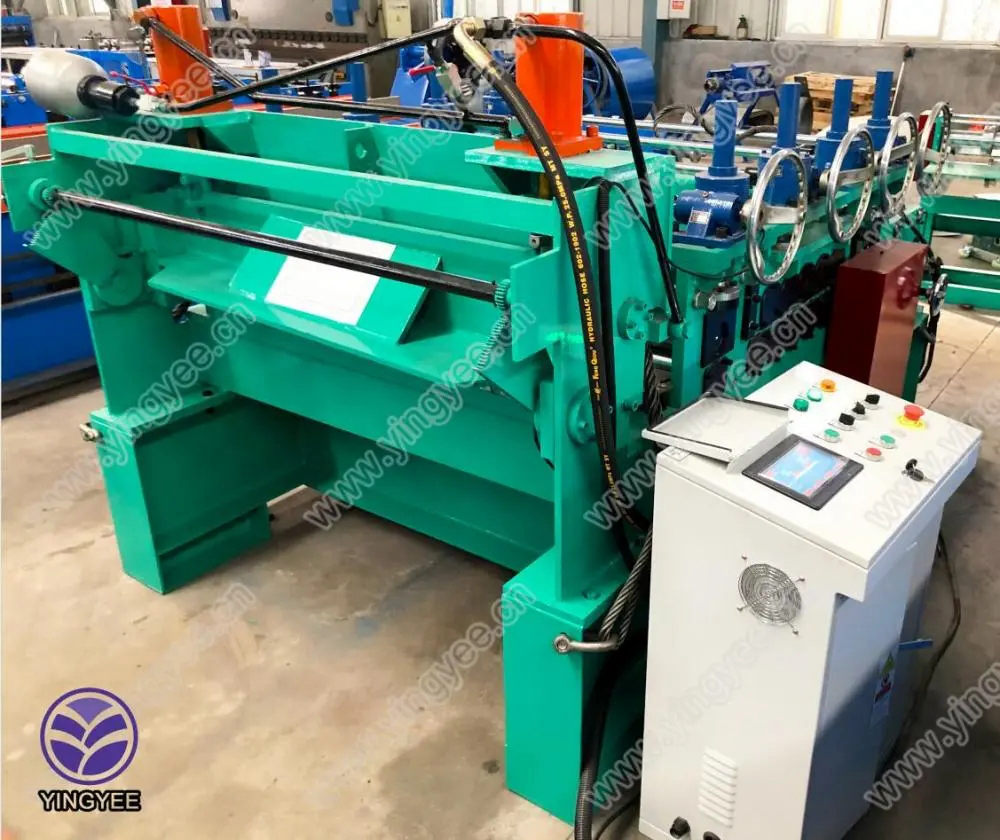
Understanding Wall Angle Roll Forming Machines in Gypsum Board Production
In the construction and interior design realm, drywall, often referred to as gypsum board or plasterboard, has established itself as a staple due to its efficiency, durability, and versatility. One of the critical components in the installation of drywall systems is the wall angle, which provides necessary support and an aesthetic finish. To produce these angles efficiently, manufacturers turn to wall angle roll forming machines.
What is a Wall Angle Roll Forming Machine?
A wall angle roll forming machine is a specialized piece of equipment used to manufacture wall angles from metal sheets. This machine shapes the sheets into angular profiles (typically L-shaped) that are used to secure drywall to the walls and ceilings and to create clean transitions between drywall panels. The roll forming process involves bending or forming a flat strip of metal into the desired cross-section through a series of progressively staged rolls.
The Process of Roll Forming
The roll forming process begins with feeding a flat metal strip—usually made from galvanized steel or aluminum—into the machine. As the strip moves through a series of rollers, it is gradually shaped into the desired profile. Key components of the machine include
1. Feeding System Ensures the metal strip is fed consistently and evenly into the rollers. 2. Roll Stations Sequentially shape the metal, gradually forming the wall angle profile. 3. Cutting System Once the desired length of the wall angle is achieved, a cutting system slices the profile to specification. 4. Control System Modern machines are equipped with advanced control systems that allow for easy adjustments of the speed, dimensions, and other parameters during operation.

Advantages of Using Roll Forming Machines
1. High Production Efficiency Wall angle roll forming machines can produce large quantities of angles in a relatively short period. This is pivotal in the construction sector where time is money. 2. Consistency and Precision The automated nature of roll forming ensures that each angle produced conforms to precise measurements, leading to fewer errors and waste. 3. Versatility These machines can often be adjusted to produce different profiles, making it easier for manufacturers to cater to varied construction needs without significant downtime. 4. Cost-Effectiveness By minimizing material waste and reducing labor costs, roll forming can significantly enhance profitability for manufacturers.
Applications of Wall Angles
Wall angles play a crucial role in multiple applications, including
- Ceiling Systems They support drywall panels in suspended ceilings, ensuring that the panels remain level and securely in place. - Partition Walls Used in creating interior walls, wall angles provide edges that help in framing drywall and ensuring a neat finish. - Corner Beads Wall angles can also act as corner beads, providing added strength and protection to corners against impacts. Conclusion
The importance of wall angles in drywall installation cannot be overstated. Their production through wall angle roll forming machines not only streamlines the manufacturing process but also guarantees the high quality and durability of the products used in the construction industry. As architecture continues to evolve and the demand for efficient building materials rises, the roll forming technology for wall angles and other metal profiles will likely become even more critical in meeting these needs.
In summary, wall angle roll forming machines represent a blend of efficiency, versatility, and precision that provides significant advantages to manufacturers and, by extension, to the construction industry. As technology advances and construction practices adapt, these machines will be at the forefront of providing robust solutions for drywall installations, enhancing both aesthetics and functionality in built environments.